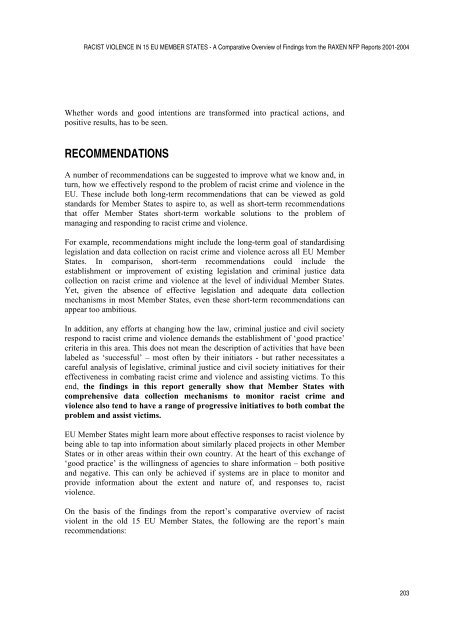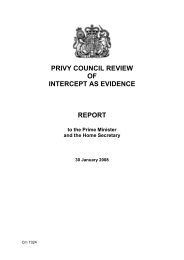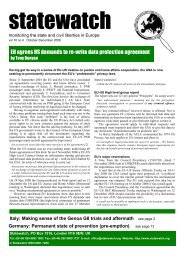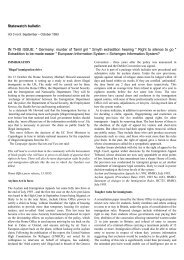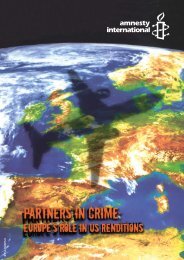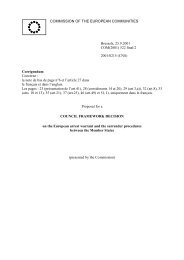RACIST VIOLENCE IN 15 EU MEMBER STATES - Cospe
RACIST VIOLENCE IN 15 EU MEMBER STATES - Cospe
RACIST VIOLENCE IN 15 EU MEMBER STATES - Cospe
You also want an ePaper? Increase the reach of your titles
YUMPU automatically turns print PDFs into web optimized ePapers that Google loves.
<strong>RACIST</strong> <strong>VIOLENCE</strong> <strong>IN</strong> <strong>15</strong> <strong>EU</strong> <strong>MEMBER</strong> <strong>STATES</strong> - A Comparative Overview of Findings from the RAXEN NFP Reports 2001-2004<br />
Whether words and good intentions are transformed into practical actions, and<br />
positive results, has to be seen.<br />
RECOMMENDATIONS<br />
A number of recommendations can be suggested to improve what we know and, in<br />
turn, how we effectively respond to the problem of racist crime and violence in the<br />
<strong>EU</strong>. These include both long-term recommendations that can be viewed as gold<br />
standards for Member States to aspire to, as well as short-term recommendations<br />
that offer Member States short-term workable solutions to the problem of<br />
managing and responding to racist crime and violence.<br />
For example, recommendations might include the long-term goal of standardising<br />
legislation and data collection on racist crime and violence across all <strong>EU</strong> Member<br />
States. In comparison, short-term recommendations could include the<br />
establishment or improvement of existing legislation and criminal justice data<br />
collection on racist crime and violence at the level of individual Member States.<br />
Yet, given the absence of effective legislation and adequate data collection<br />
mechanisms in most Member States, even these short-term recommendations can<br />
appear too ambitious.<br />
In addition, any efforts at changing how the law, criminal justice and civil society<br />
respond to racist crime and violence demands the establishment of ‘good practice’<br />
criteria in this area. This does not mean the description of activities that have been<br />
labeled as ‘successful’ – most often by their initiators - but rather necessitates a<br />
careful analysis of legislative, criminal justice and civil society initiatives for their<br />
effectiveness in combating racist crime and violence and assisting victims. To this<br />
end, the findings in this report generally show that Member States with<br />
comprehensive data collection mechanisms to monitor racist crime and<br />
violence also tend to have a range of progressive initiatives to both combat the<br />
problem and assist victims.<br />
<strong>EU</strong> Member States might learn more about effective responses to racist violence by<br />
being able to tap into information about similarly placed projects in other Member<br />
States or in other areas within their own country. At the heart of this exchange of<br />
‘good practice’ is the willingness of agencies to share information – both positive<br />
and negative. This can only be achieved if systems are in place to monitor and<br />
provide information about the extent and nature of, and responses to, racist<br />
violence.<br />
On the basis of the findings from the report’s comparative overview of racist<br />
violent in the old <strong>15</strong> <strong>EU</strong> Member States, the following are the report’s main<br />
recommendations:<br />
203


